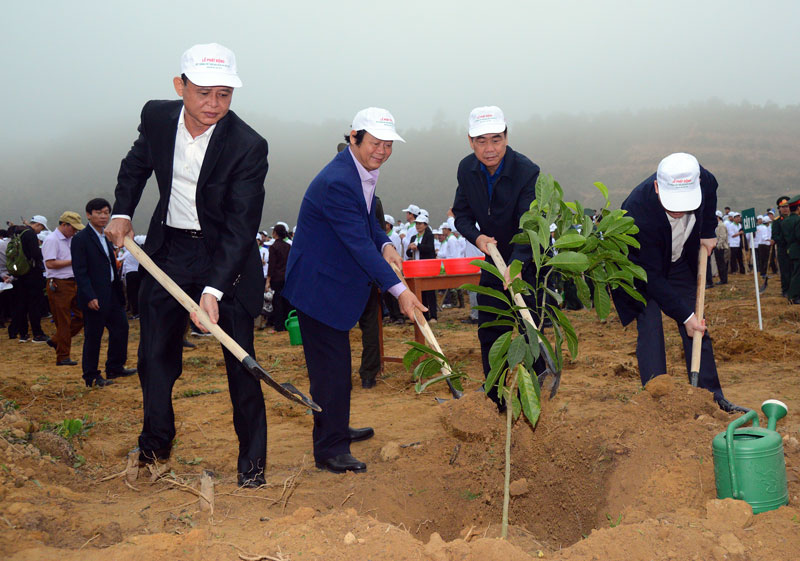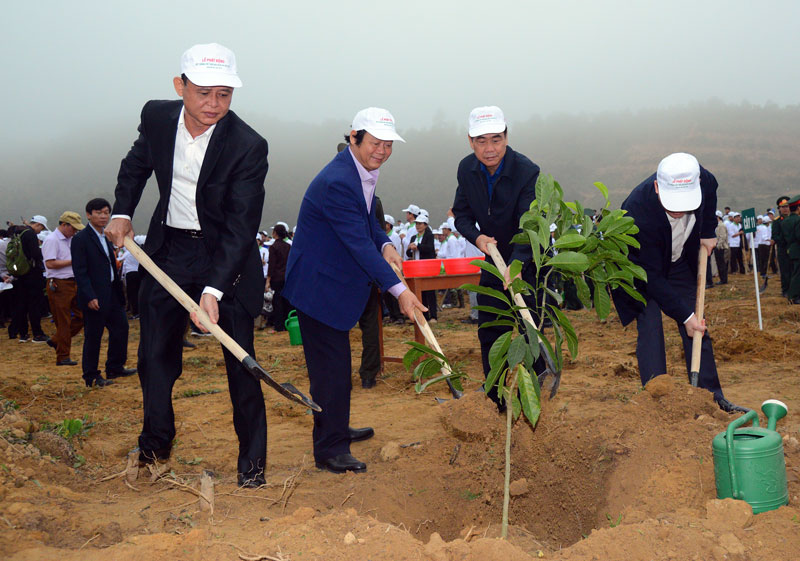



Tree planting festival commemorating late President Ho Chi Minh in Luong Son district
Hoa Binh province has a total natural area of over 460,800 hectares, of which 332,800 hectares are forest land, accounting for 72.2 percent of the total. This is huge potential for forestry economic development, afforestation and poverty reduction, thus helping improve locals’ living conditions. Considering tree planting as an important task in the socio-economic development, environmental protection and climate change response, the province has focused on directions to surpass targets related to afforestation, and forest protection and management.
The locality always fulfils annual afforestation goals, with 6,000-8,000 hectares of forests planted each year. In the five recent years, it has grown over 41,000 hectares, mainly production forests with acacia mangium accounting for over 90 percent. Along with afforestation, the province manages nearly 13,000 hectares of planted forests and protects 75,000 hectares of natural forests, while replanting around 2,500 hectares, contributing to maintaining the forest coverage of 51.2 percent. The quality of forests has been improved thanks to strict control over the quality of saplings. 100 percent of saplings put into afforestation are controlled under management decentralisation. The system of seedling forests and nurseries for forest trees are built and improved, thus better meeting the demand of forestry development towards the improvement of quality, efficiency and value. The province regularly organises courses to guide technical procedures for forest planting and management for forest owners to widely use acacia mangium seedlings imported from Australia to improve productivity and quality of planted forests.